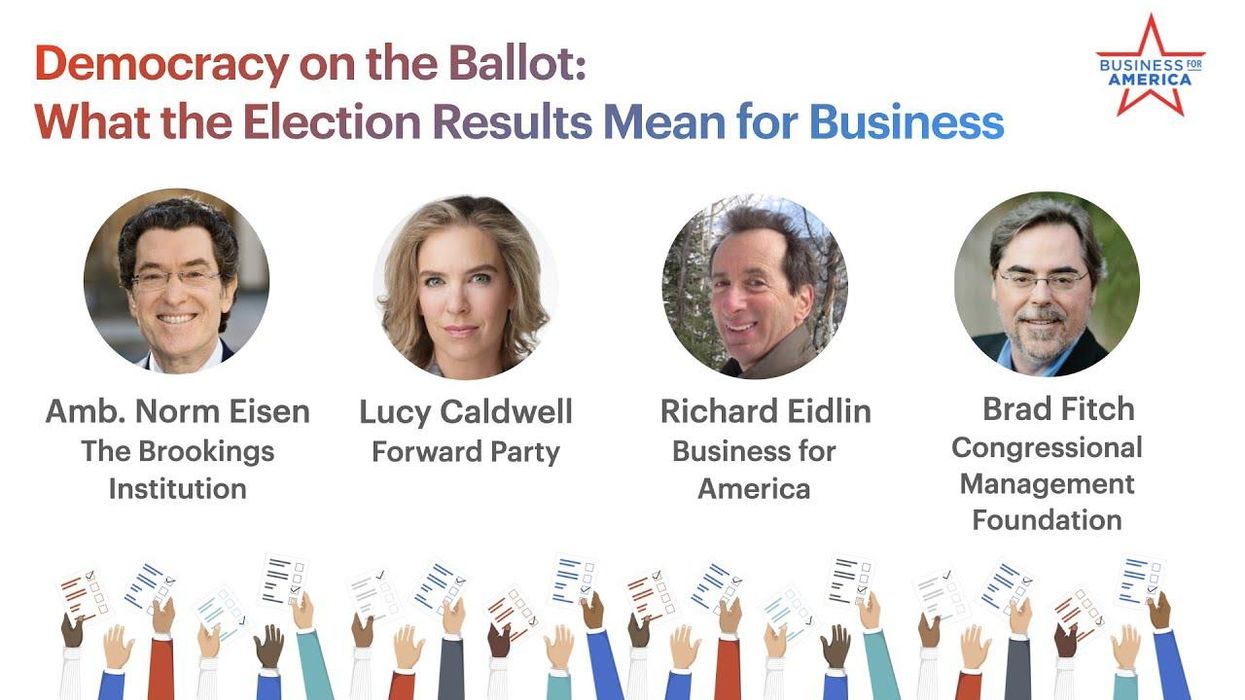No “red wave.” Relatively smooth elections. Unexpectedly high Gen Z voter turnout. With a divided Congress coming, what can we expect for state and congressional action for the next 2 years?
Watch for an in-depth diagnosis of the surprising 2022 midterm election results and what the business community can expect for the health of our democracy.












 Shannon Gormley, Rhode Island Public Schools
Shannon Gormley, Rhode Island Public Schools Les Sinclair, Blue Ridge Area Food Bank
Les Sinclair, Blue Ridge Area Food Bank Elena Casillas Hoffman,
Elena Casillas Hoffman, 
 Darrious Hilmon, Executive Director, CAN-TV
Darrious Hilmon, Executive Director, CAN-TV










